Themed collection Organs on a Chip 2013

Organs on Chips 2013
Professors Beebe, Ingber and den Toonder introduce the Lab on a Chip and Integrative Biology cross journal themed collection on ‘Organs-on-a-Chip’.
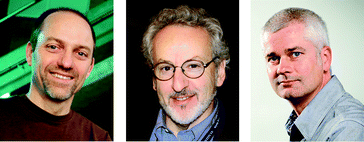
Lab Chip, 2013,13, 3447-3448
https://doi.org/10.1039/C3LC90080K
Building risk-on-a-chip models to improve breast cancer risk assessment and prevention
Modifiable (green) and nonmodifiable (red) factors cooperatively define breast cancer risk and need to be studied into biosensors-equipped physiologically relevant ‘risk-on-a-chip’ models for cancer prevention studies.
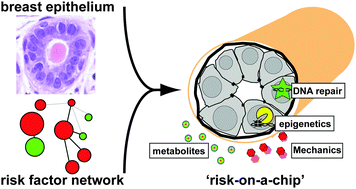
Integr. Biol., 2013,5, 1110-1118
https://doi.org/10.1039/C3IB40053K
Workshop meeting report Organs-on-Chips: human disease models
“Organs-on-Chips”: unprecedented opportunities to develop human organ and disease models, envisioned to revolutionize cell culture, cell biology and drug development.
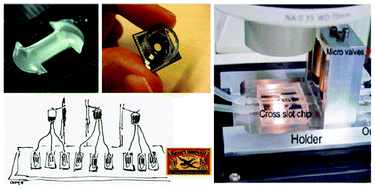
Lab Chip, 2013,13, 3449-3470
https://doi.org/10.1039/C3LC50248A
Cells, tissues, and organs on chips: challenges and opportunities for the cancer tumor microenvironment
This critical review examines the advancement of microfluidic technologies developed to tackle the outstanding challenges related to the tumor microenvironment.
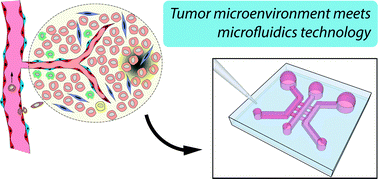
Integr. Biol., 2013,5, 1096-1109
https://doi.org/10.1039/C3IB40076J
Scaling and systems biology for integrating multiple organs-on-a-chip
The implementation of milliHuman (mHu) or microHuman (μHu) coupled systems of human organ constructs or organs-on-chips must address the relative scaling of each organ, using either allometric or functional guidelines.
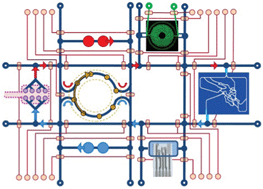
Lab Chip, 2013,13, 3496-3511
https://doi.org/10.1039/C3LC50243K
Regeneration-on-a-chip? The perspectives on use of microfluidics in regenerative medicine
The needs of regenerative medicine research and the tools microfluidics offers to meet these needs.
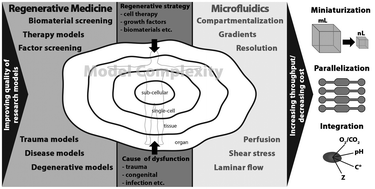
Lab Chip, 2013,13, 3512-3528
https://doi.org/10.1039/C3LC50293G
Chip-based liver equivalents for toxicity testing – organotypicalness versus cost-efficient high throughput
In this review, we focus on advanced microfluidic microscale liver equivalents, appraising them against the level of architectural and, consequently, functional identity with their human counterpart in vivo.
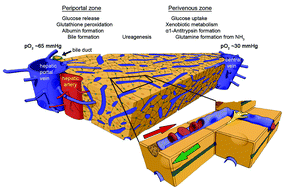
Lab Chip, 2013,13, 3481-3495
https://doi.org/10.1039/C3LC50240F
The future of the patient-specific Body-on-a-chip
As significant advancements in technology focused on Organ-on-a-chip continue, it is feasible to consider the future of Body-on-a-chip technology.

Lab Chip, 2013,13, 3471-3480
https://doi.org/10.1039/C3LC50237F
Disease-on-a-chip: mimicry of tumor growth in mammary ducts
Tumors (red) within a circular luminal breast epithelium mimicking cancer growth in a mammary duct. Inset: orthogonal view of a tumor.
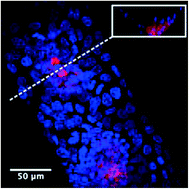
Lab Chip, 2014,14, 172-177
https://doi.org/10.1039/C3LC50819F
Body-on-a-chip simulation with gastrointestinal tract and liver tissues suggests that ingested nanoparticles have the potential to cause liver injury
The use of nanoparticles in medical applications is highly anticipated, and at the same time little is known about how these nanoparticles affect human tissues.
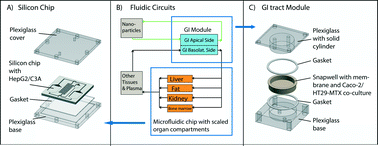
Lab Chip, 2014,14, 3081-3092
https://doi.org/10.1039/C4LC00371C
On being the right size: scaling effects in designing a human-on-a-chip
We have investigated approaches to appropriately scale the components of a ‘human-on-a-chip’ to design a generalized model for drug efficacy and toxicity screening.

Integr. Biol., 2013,5, 1149-1161
https://doi.org/10.1039/C3IB40040A
Gut-on-a-Chip microenvironment induces human intestinal cells to undergo villus differentiation
Human intestinal epithelial Caco-2 cells cultured in a microengineered Gut-on-a-Chip are reprogrammed to spontaneously undergo villus morphogenesis and cytodifferentiation that closely mimics human small intestinal villi.

Integr. Biol., 2013,5, 1130-1140
https://doi.org/10.1039/C3IB40126J
A multiphase fluidic platform for studying ventilator-induced injury of the pulmonary epithelial barrier
Mechanical ventilation has been a critical part of basic life support for many years, with almost one-third of all patients in the intensive care unit requiring the aid.
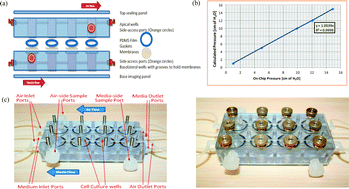
Integr. Biol., 2013,5, 1141-1148
https://doi.org/10.1039/C3IB40037A
Human kidney proximal tubule-on-a-chip for drug transport and nephrotoxicity assessment
Human kidney proximal tubule-on-a-chip lined by living cells exposed to fluidic flow mimics proximal tubular morphology, function and drug toxicity responses.
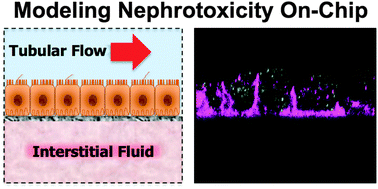
Integr. Biol., 2013,5, 1119-1129
https://doi.org/10.1039/C3IB40049B
Microfluidic titer plate for stratified 3D cell culture
A microfluidic titer plate for 3D cell culture is reported. The phaseguide-stratified setup enables passive perfusion and co-culture in high-throughput.

Lab Chip, 2013,13, 3548-3554
https://doi.org/10.1039/C3LC50210D
Microfluidic heart on a chip for higher throughput pharmacological studies
Heart on a chip incorporated into fluidic microdevices amenable to higher throughput in vitro studies of structural and contractile properties.

Lab Chip, 2013,13, 3599-3608
https://doi.org/10.1039/C3LC50350J
Three-dimensional co-cultures of human endothelial cells and embryonic stem cell-derived pericytes inside a microfluidic device
We describe a microfluidic, three-dimensional model of a blood vessel. We analyze the structural organization and the three-dimensional interaction between human primary endothelial cells and human pluripotent stem cell-derived pericytes.
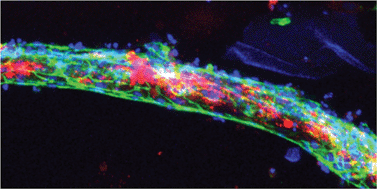
Lab Chip, 2013,13, 3562-3568
https://doi.org/10.1039/C3LC50435B
Hydrogel-coated microfluidic channels for cardiomyocyte culture
A method to coat microfluidic channels with a hydrogel to promote cell adhesion for organ-on-a-chip applications is presented.
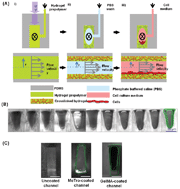
Lab Chip, 2013,13, 3569-3577
https://doi.org/10.1039/C3LC50252J
Integrating biological vasculature into a multi-organ-chip microsystem
A chip-based platform mimicking the transport function of the cardiovascular system, a crucial part of future human-on-a-chip culture, was developed.

Lab Chip, 2013,13, 3588-3598
https://doi.org/10.1039/C3LC50217A
A dynamic multi-organ-chip for long-term cultivation and substance testing proven by 3D human liver and skin tissue co-culture
For the first time, a co-culture of human liver and skin equivalents on dynamic micro-chips has been performed.
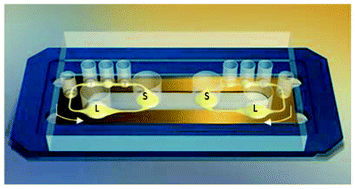
Lab Chip, 2013,13, 3538-3547
https://doi.org/10.1039/C3LC50234A
Skin and hair on-a-chip: in vitro skin models versus ex vivo tissue maintenance with dynamic perfusion
In vitro skin model, ex vivo skin and hair follicular units were cultured in a dynamically perfused chip-based bioreactor.
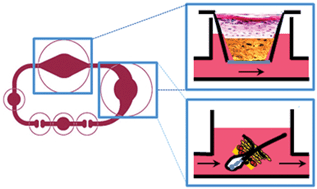
Lab Chip, 2013,13, 3555-3561
https://doi.org/10.1039/C3LC50227A
Liver-cell patterning Lab Chip: mimicking the morphology of liver lobule tissue
A liver-lobule-mimetic reconstruction for centimeter-scale liver tissue of heterogeneous hepatic and endothelial cells is demonstrated. This could be promisingly applied to the fields of tissue engineering, drug development and liver physiology studies.

Lab Chip, 2013,13, 3578-3587
https://doi.org/10.1039/C3LC50402F
Spheroid-based three-dimensional liver-on-a-chip to investigate hepatocyte–hepatic stellate cell interactions and flow effects
The osmotic pump can generate the main driving power of the system in the spheroid-based three-dimensional liver-on-a-chip.
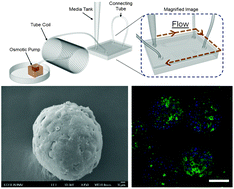
Lab Chip, 2013,13, 3529-3537
https://doi.org/10.1039/C3LC50197C
About this collection
A cross journal themed collection across Lab on a Chip and Integrative Biology, guest edited by Professors David J. Beebe, Donald E. Ingber and Jaap den Toonder focussing on "Organs-on-a-Chip".